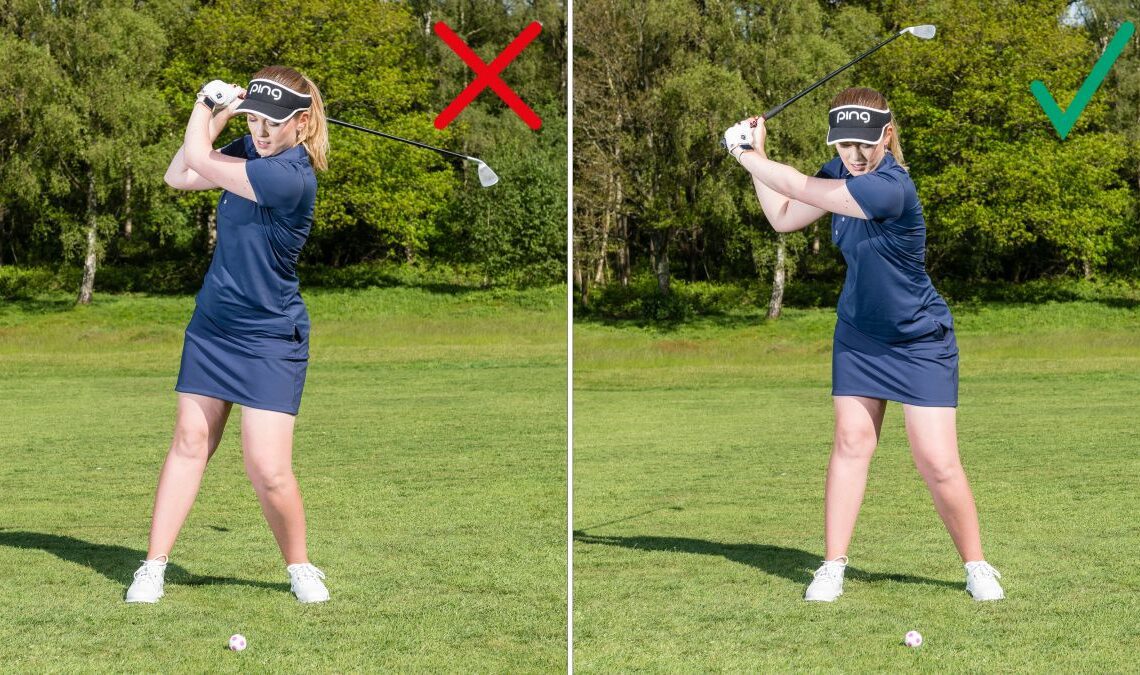By making a big backswing you’re not going to get more distance unless you have ridiculously fast hands that are going to save the shot. Most of the time, it just means you are going to end up out of position and then you’ll have to make a load of adjustments to put things right.
The overswing is generally a consequence of the arms going too long. And this is usually caused by the left arm bending, which enables the club to travel further than it needs to. It can happen when the body turns too much but this scenario is a lot less likely with club golfers.
How far should you go?
What you want is a shorter, wider backswing. To achieve this, turn back and load up on your right side. That means your left shoulder should come across to just inside your right foot. Learning how to get a straight left arm in your golf swing will also help, although it doesn’t have to be completely straight but there shouldn’t be a noticeable bend.
A shorter, wider backswing will improve your consistency
(Image credit: Future)
When it’s this compact like this it is far easier to time the delivery of the club back into an efficient impact position for a better combination of accuracy and distance. Swings past parallel don’t tend to produce this outcome.
It is hard to gauge how far you’ve swung it and most of us will tend to swing further when we’re actually hitting it. I like to feel that my hands are almost level with the centre of my chest with a good bit of width. To achieve this, feel like you are pushing your hands away from your head, and not too close to the body.
Remember this position
Power comes from hitting down on your irons (left). If you reverse pivot, your impact position will suffer (right)
(Image credit: Future)
This (above left) is a good image to try and keep in your head. With your irons, power comes from hitting down and learning how to compress the golf ball – this is the position you want to strive for.
When you overswing there is a good chance you will reverse pivot, meaning you need to work on your weight distribution in the golf swing. When…
..
Click Here to Read the Full Original Article at Golf Monthly RSS Feed…
